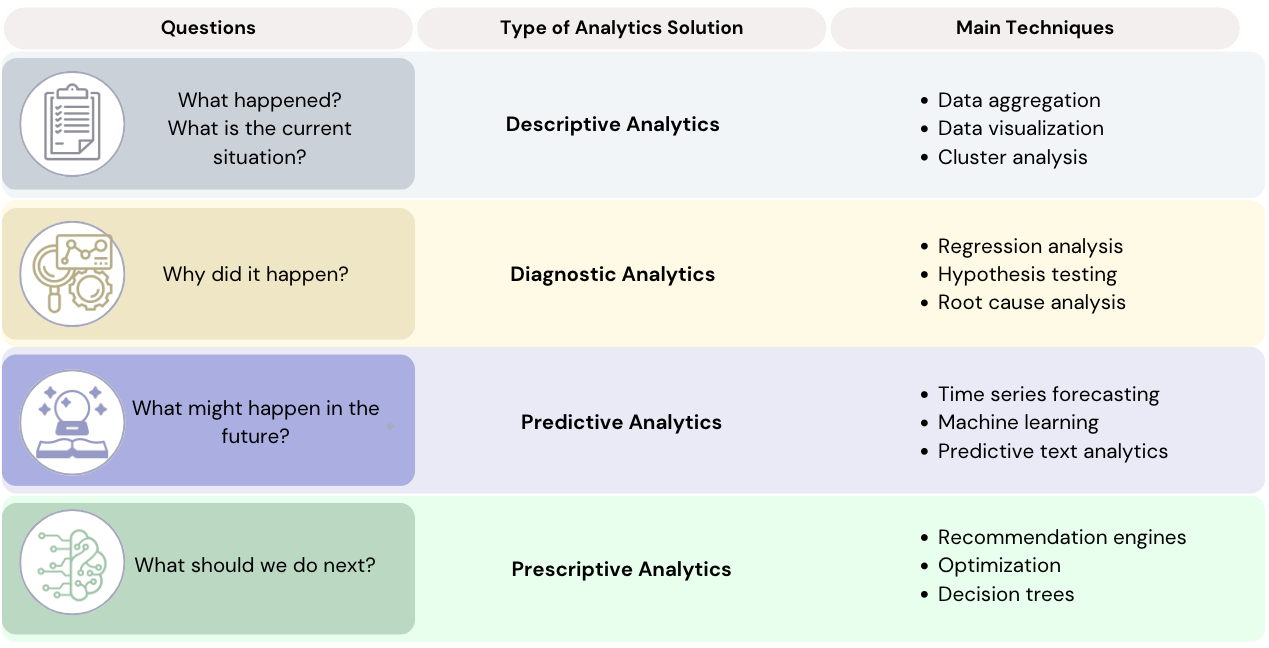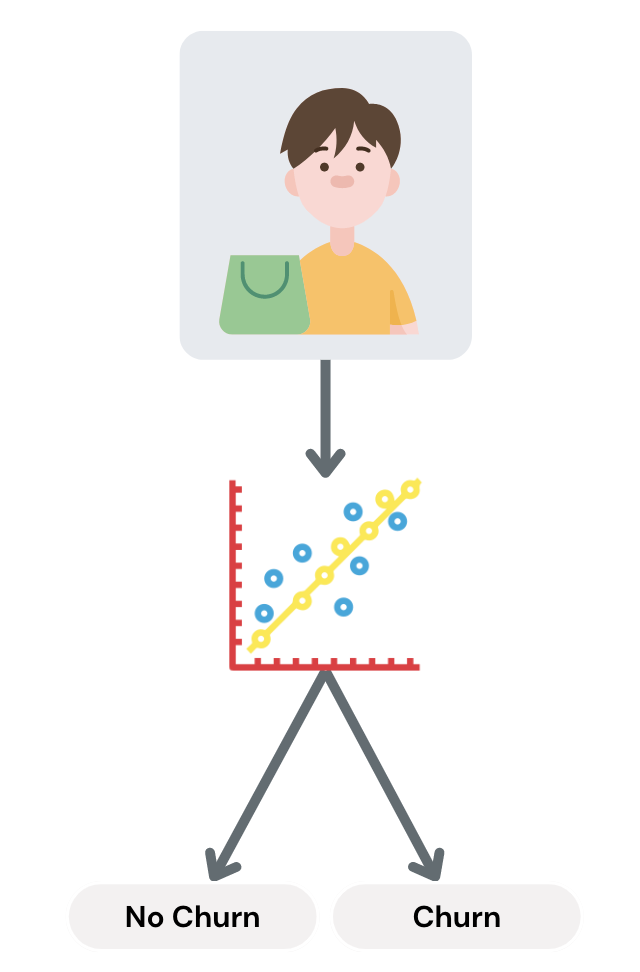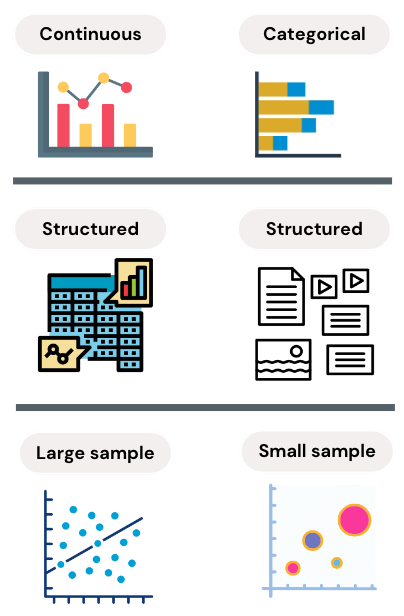Choosing the best analytical solution
Forming Analytical Questions

Konstantinos Kattidis
Data Analytics Lead
Steps to identify the best analytical technique
Categorize the analytical question into the relevant type of analytical solution.
Brainstorm relevant techniques.
Select the most appropriate technique

Find the relevant type of analytics

Consider the output of the analysis

Think of what the expected output should be.
Example:
- Predicting which customer segments are most likely to churn.
- Output: Binary prediction. Churn, or no churn.
- Summarize the sales trends over time.
- Output: Data visualization

Consider the data type and size
The selection of the analytical technique depends on the:
Data type:
- Continuous or categorical
- Structured or unstructured
Data sample size:
- Large or small sample

Consider time and skill set
- Consider the time and resources of the analytics team.
- Simpler techniques may provide the insights needed and save time.
- Consider the skill set of the analytics team.
- Complex techniques may require advanced analytics expertise.

Aim for the simplest solution
Disadvantages of complex solutions:
- Challenging to implement
- Increased cost and time required
- Challenging to interpret and communicate to non-technical stakeholders
The best analytical solution is one that can provide actionable insights that can drive decision-making.

Let's practice!
Forming Analytical Questions

